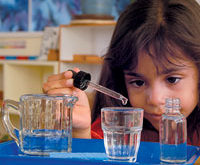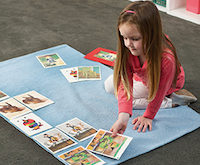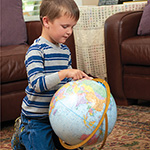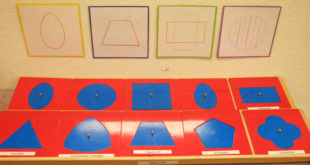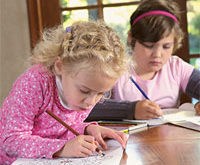Children naturally absorb the logic and the beauty of physical science as they interact with the environment: pushing a truck up an incline, observing light reflecting on water, or unconsciously witnessing gravity as the rock falls to the ground. It’s easy for teachers to offer many hands-on science activities so …
Read More »TimeLine Layout
January, 2018
-
16 January
The Magic of Color in the Classroom
Color – the stuff of science and poetry, art and beauty. Children and adults love the magic of color, whether admiring a rainbow, watching a smoothie turn pink when strawberries are added, or just picking the perfect colored shirt to wear. Developing the Chromatic Sense In the primary Montessori classroom …
Read More » -
16 January
Art Appreciation: Child-Size Masterpieces
Discover the joy of introducing art appreciation to children in your classroom. Developed by Aline Wolf and used in hundreds of Montessori classrooms, the Child-Size Masterpieces program includes activities for children of all ages. You, too, can embark on the delightful voyage of introducing beautiful paintings to your students. An …
Read More » -
16 January
The Joy of Geography
One of the many gifts a Montessori education often brings is a life-long enthusiasm for geography. Geography helps children place themselves on Earth, fostering care for the rivers, forests, oceans, and peoples. Physical geography focuses on the features of Earth’s environment. Political geography studies how humans have adapted to the …
Read More » -
16 January
Words: Oral Language
There are so many opportunities for teachers to optimize oral language in the Montessori classroom. It starts in the morning when we greet the children and welcome them into the classroom. “Good morning, Taylor. It’s nice to see you today. How are you?” The children respond. Greeting the teacher and …
Read More » -
16 January
Words + Movement = Reading
Many teachers think of language objects only as those in boxes used for I Spy or sound games or the First Phonetic Object Box. But language objects are everywhere – they don’t need to come in a box. In the Montessori classroom, everything has a place and a purpose. This …
Read More » -
16 January
Take Another Look at the Metal Insets
As Montessori teachers know, the Metal Insets are the direct preparation for writing. This activity follows extensive indirect preparation using the Practical Life and Sensorial materials. Children perfect large muscle control before small, and simultaneously develop eye-hand coordination. The knobs of the Cylinder Blocks and Geometric Cabinet assist the development …
Read More » -
16 January
Fostering the Love of Books
A few days earlier the teacher had given a lesson on how to “break in” a new book and when she finished, she sniffed the book, remarking how much she loved the smell of a new book. Fostering the love of books happens in many ways: choosing quality literature, reading …
Read More » -
16 January
Cursive Handwriting: How Important Is It?
Many of us would answer: “Very important!” While Montessorians have deliberated for years whether children should learn to write first in cursive or print, we’ve all thought cursive was an essential skill. Now there is a lively debate occurring in the field of education about whether, in this age of …
Read More » -
16 January
Sandpaper Letters – Refresh Your Presentations
The Sandpaper Letters are one of Maria Montessori’s most brilliant materials. Tracing the letters gives children the foundation for beautiful penmanship. Working with the Sandpaper Letters, children learn how the sounds they hear are written. Montessori emphasized that writing comes first, then reading. Later, by blending these sounds together, children …
Read More »
 Montessori blog Montessori blog
Montessori blog Montessori blog
